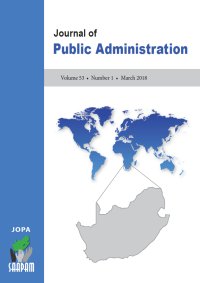
South Africa entered a totally new era with the advent of the democratic elections of April 1994. The effects were visible in the composition of the state, the departments as well as the diversification of service delivery to all inhabitants irrespective of race, colour or creed. The invisible effects happened and are still happening inside the public institutions on all three spheres of government. These effects relate to the administrative and managerial practices that were devised to cope with the increased demand for quality services, but acknowledging the limited resources available. This review of the transformation after a decade of democratic government attempts to highlight and evaluate the successes and the challenges faced by public institutions within a new constitutional dispensation.